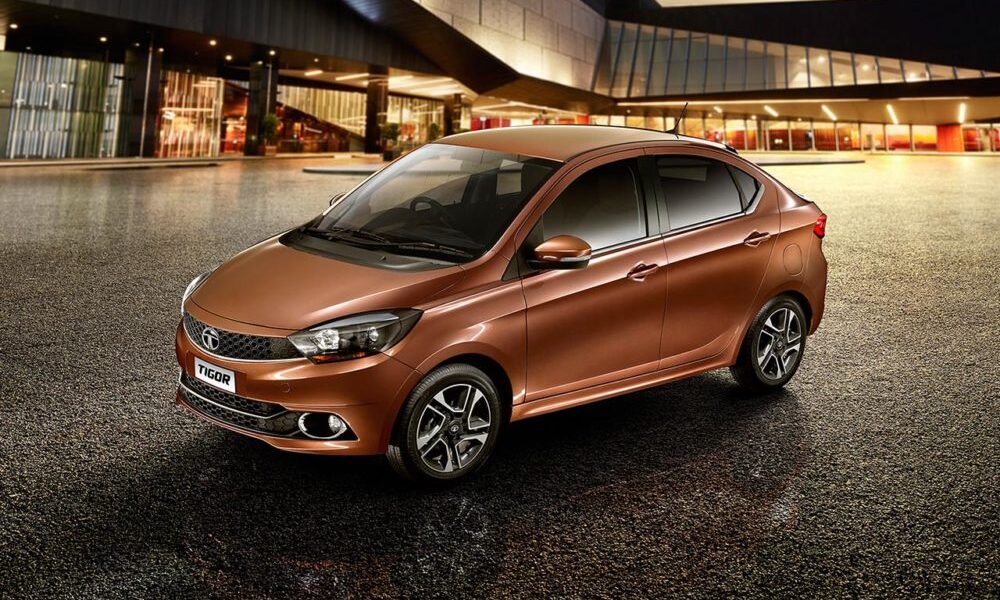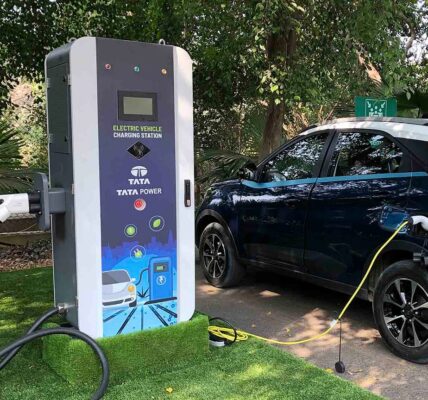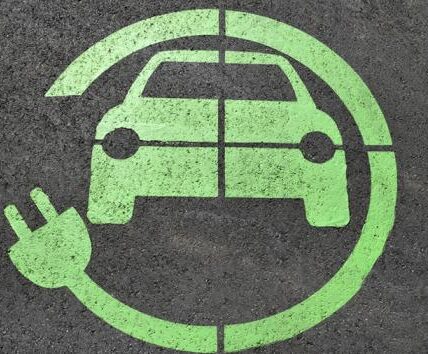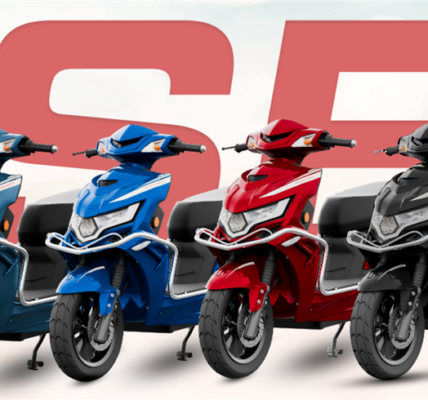Today, September 9, is World EV Day. Two days ago, on September 7, Tata Motors revealed the Nexon.ev, its next-gen iteration of the Nexon EV, the best-selling electric passenger vehicle (e-PV) in India which has also helped make the Nexon the best-selling SUV in the country amid intense market competition.
The company, which is the market-leading electric passenger vehicle OEM thanks to it being the first to mainstream e-PVs for the mass market, is aiming to have EVs comprise 50% of its portfolio by 2030. At present, its seven-model portfolio which comprises the Altroz and Tiago hatchbacks, Tigor sedan, and the Nexon, Punch, Harrier and Safari SUVs has EV variants for three models – the Nexon EV, Tigor EV (and Xpres-T EV for fleet buyers) and the Tiago EV.
FIRST-MOVER EV-ADVANTAGE
Tata Motors, which has achieved remarkable growth in the past three years to become a strong No. 3 PV player after Maruti Suzuki India and Hyundai Motor India, continues to benefit from its first-mover advantage in the EV market and is also among the few OEMs with multiple powertrains – petrol, diesel, CNG and electric.
In a short span of three years, the company has emerged as the largest electric passenger vehicle OEM albeit it can be said there it saw minimal competition in the first two years. From an 84% retail market share in FY2022, Tata Motors currently has a 74.61% share (January-August 2023) as the e-PV market has now expanded sizeably with new models being introduced by both existing and new rivals.
At present, Tata Motors’ EV portfolio is the largest for carmaker in India – Tiago EV, Xpres-T EV, Tigor EV, Nexon EV Prime and Nexon EV Max. This eco-friendly five-pack has helped the company reach out towards its target audience – both personal EV buyers and EV fleet buyers. While the Nexon EV continues to be the model with the maximum demand, the recent launch of the Tiago EV, the most affordable ePV in India, the company has benefitted from demand from fleet operators, who achieve substantial gains from wallet-friendly EVs as compared to petrol, diesel or even CNG-powered cars. In FY2023, Tata inked MoUs with three fleet operators for a total of 45,000 Xpres-T sedans – Blusmart Mobility (10,000 units), Uber Technologies (25,000 units) and Lithium Urban Technologies (5,000 units).
This is amply reflected in the company’s EV sales growth (see data table above). From total sales of 19,106 units in FY2022, sales jumped 150% to 47,792 units in FY2023. And in the first five months of the ongoing FY2024, Tata Motors has already sold 31,911 units, up 81% YoY (April-August 2022: 17,623 units), which constitutes 67% of the FY2023 total. Given this rapid pace of sales, it can be surmised that Tata Motors will add another 50,000-55,000 EVs in the remaining seven months of FY2024 to hit the 85,000-unit mark.
Calendar-year wise, the company has clocked total sales of 47,871 EVs in the first eight months of CY2023, up 77.35% year on year (January-August 2022: 26,991 units).
TATA’S EV PENETATION IN PV SALES NOW OVER 13 PERCENT
What helped Tata Motors make speedy gains was expanding the addressable market with three body styles – sedan, SUV and hatchback – which cater to both the premium and mass market customer segments.
This wide spread of product offering is reflected in the growing share of EVs in Tata Motors’ overall PV sales (see data table above). From 4,218 units in FY2021, EV sales rose 352% (on a low base) to 19,106 units in FY2023, and by 150% YoY to 47,792 units in FY2023. And in the first five months of FY2024, the YoY sales increase is 81 percent. As a result, the carmaker is seeing the level of EV penetration in its overall PV sales rise – from 2% in FY2021 to 4% in FY2022 and to 9% in FY2023. For the April-August 2023 period, the EV share of Tata’s PV sales stands at 13.63% percent.
It is understood that the aim is to increase the EV contribution to its overall PV portfolio to 25% in five years and reach 50% by 2030.
GETTING FUTURE-READY
Even as Tata Motors has unveiled the new Nexon EV this week, it is set to up the ante with the launch of the Punch EV later this year. While the sub-compact electric SUV has been spied testing previously, a new spy shot reveals that the zero-emission Tata Punch EV has a charging slot on the front bumper.
In what was arguably the biggest surprise at Auto Expo 2023, Tata Motors unveiled three EV concepts – the Harrier EV, Sierra EV (above) and the Avinya concept (below). The Harrier EV concept was unveiled in a close-to-production guise and will go on sale in 2024.
As is known, the company had revealed its future EV model strategy at the Auto Expo 2023 in New Delhi in January. Along with the Harrier EV and Sierra EV concepts, the car and SUV maker revealed its three-phased model strategy across the Gen 2 and Gen 3 architecture. These took the form of the Curvv concept, a Gen 2 EV based on a multi-energy platform, and Avinya, a Gen 3 EV developed on an optimised, dedicated EV platform.
FY2023 saw the company expand its EV range with the Nexon EV Max and Tiago EV and the new Nexon 2023 model is a move in the same direction to accelerate penetration in the domestic market by providing India-specific EVs with different body styles, driving ranges and multiple price points. The company is on track to deliver 10 EVs by 2026. As is known, Tata Motors has committed an investment of US$ 2 billion (approximately Rs 16,500 crore) in its EV business starting in 2022 over a five-year period.
That’s not all. To ensure it is future-proofed on the manufacturing capacity front, Tata Motors’ recent acquisition of Ford India’s plant in Sanand, Gujarat, will help unlock additional capacity of 300,000 units per annum, expandable to 420,000 units per annum.
EXPANDING THE EV SALES NETWORK, ECOSYSTEM, ENHANCING LOCALISATION
Meanwhile, in sync with its growing sales, Tata Motors has over the past couple of years substantially expanded its market coverage to reach 165 cities in India, up from 75 in FY2022 and 51in FY2021. Likewise, the company has tied up with 250 dealerships in FY2023, increasing its network by 75% YoY from 143 showrooms in FY2022 and 97 in FY2021.
What is enabling Tata Motors’ speedy EV drive is the many synergies with the Tata Group and works closely with group companies like Tata Power, Tata Chemicals, Tata Autocomp, TCS, Tata Digial, Tata Elxsi and Tata Motors Finance. As per the company, it has completed localisation of key EV powertrain components and is working towards achieving deeper localisation for components such as battery pack, motor, and 3-in-1 combo box.
Meanwhile, Tata Power has expanded its EZ Charge EV charging infrastructure to over 50,000 home chargers, 4,370 public and semi-public charging points, and 250 bus-charging points across 350 cities including multiple highways. The company aims to set up 25,000 charging points in the next five years. Tata Power has expanded its home charging offerings with the introduction of 7.2kW. AC charger options for the Nexon EV Max and Tiago EV and has begun installing AC fast chargers in Resident-Welfare Associations (RWAs). In FY2023, over 900 chargers were installed across 175 societies in five metros: Mumbai, Pune, Indore, Delhi and Bengaluru.
With the launch of the new Nexon.ev on September 14, the expected rollout of the Punch EV later this year, and continuing demand for the Tigor EV, Xpres-T and Tiago EV, Tata Motors is clearly looking to drive home its EV-advantage even more.







